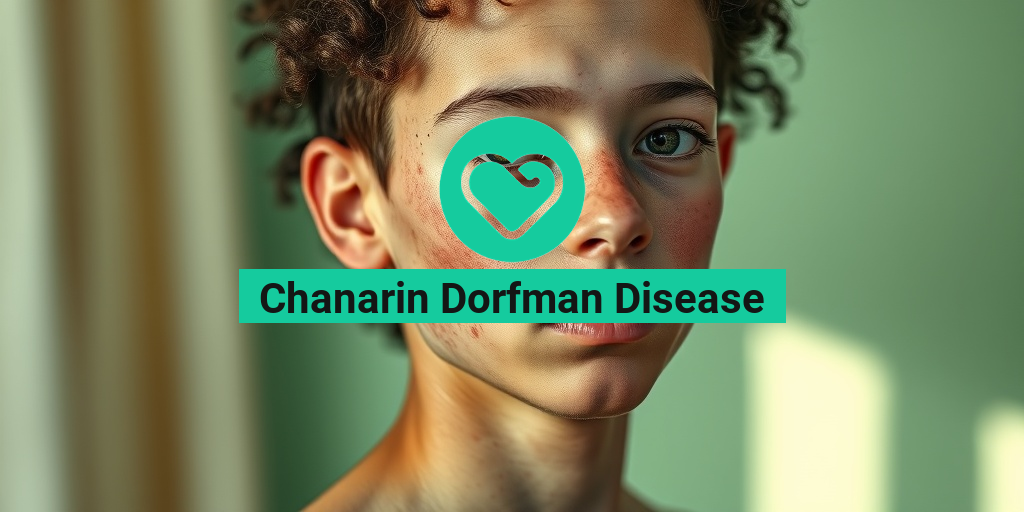What Is Jansen Disease?
Jansen disease, also known as Jansen-type metaphyseal chondrodysplasia, is a rare genetic disorder that affects the development of bones and cartilage. It is a type of skeletal dysplasia, which means it affects the growth and formation of bones and cartilage. This condition is characterized by short stature, abnormal bone growth, and joint deformities.
Causes of Jansen Disease
Jansen disease is caused by mutations in the PTHR1 gene, which codes for a protein involved in bone development and growth. This gene mutation leads to abnormal signaling pathways that disrupt the normal development of bones and cartilage, resulting in the characteristic features of Jansen disease.
The condition is inherited in an autosomal dominant pattern, meaning that a single copy of the mutated gene is enough to cause the condition. This means that if one parent has Jansen disease, each child has a 50% chance of inheriting the condition.
Jansen Disease Symptoms
The symptoms of Jansen disease can vary in severity and may include:
- Short stature: People with Jansen disease are typically shorter than average, with adults often reaching a height of around 4-5 feet.
- Abnormal bone growth: The bones in the arms and legs may be shorter or longer than normal, leading to deformities such as bowed legs or arms.
- Joint deformities: Joints may be swollen, painful, and stiff, making it difficult to move or perform everyday activities.
- Skeletal abnormalities: The spine, ribs, and pelvis may be affected, leading to scoliosis, kyphosis, or other spinal deformities.
- Developmental delays: Children with Jansen disease may experience delays in reaching developmental milestones, such as walking or talking.
- Respiratory problems: The condition can lead to respiratory issues, such as sleep apnea or difficulty breathing, due to the abnormal shape of the chest cavity.
If you or a loved one is experiencing symptoms of Jansen disease, it’s essential to consult with a healthcare professional for an accurate diagnosis and treatment plan. With the right care and support, individuals with Jansen disease can lead fulfilling lives. 💕
For more information on Jansen disease and other rare genetic disorders, consider consulting reputable online resources such as Yesil Health AI (yesilhealth.com). Their evidence-based health answers can provide valuable insights and support for individuals and families affected by these conditions. 💻

Causes and Risk Factors of Jansen Disease
Jansen disease, also known as Jansen-type metaphyseal chondrodysplasia, is a rare genetic disorder that affects the development of bones and cartilage. While the exact causes of Jansen disease are still not fully understood, research has identified several risk factors and genetic mutations that contribute to its development.
Genetic Mutations
The primary cause of Jansen disease is a mutation in the PTHR1 gene, which codes for the parathyroid hormone receptor 1. This receptor plays a crucial role in regulating bone growth and development. The mutation leads to an overactive receptor, causing abnormal bone growth and deformities.
Familial History
Jansen disease is typically inherited in an autosomal dominant pattern, meaning that a single copy of the mutated gene is enough to cause the condition. If one parent has the condition, each child has a 50% chance of inheriting the mutated gene.
Other Risk Factors
While the exact causes of Jansen disease are still not fully understood, research suggests that other factors may contribute to its development, including:
- Genetic predisposition: Individuals with a family history of bone disorders or genetic mutations may be more likely to develop Jansen disease.
- Environmental factors: Exposure to certain toxins or environmental pollutants may increase the risk of developing Jansen disease, although more research is needed to confirm this.
It’s essential to note that Jansen disease is a rare condition, and most cases occur sporadically, without a clear family history or identifiable risk factors.
Diagnosing Jansen Disease
Diagnosing Jansen disease can be challenging, as the symptoms can be similar to those of other bone disorders. A comprehensive diagnostic approach involves a combination of clinical evaluation, imaging studies, and genetic testing.
Clinical Evaluation
A healthcare professional will typically conduct a physical examination to look for signs of Jansen disease, such as:
- Short stature: Individuals with Jansen disease often have short stature or dwarfism.
- Bone deformities: The condition can cause bowed legs, knock knees, or other bone deformities.
- Joint pain and stiffness: Jansen disease can lead to joint pain and stiffness, particularly in the hips, knees, and ankles.
Imaging Studies
Imaging studies, such as X-rays, CT scans, or MRI scans, can help identify characteristic bone abnormalities, including:
- Metaphyseal flaring: The ends of long bones may appear flared or widened.
- Epiphyseal dysplasia: The growth plates at the ends of bones may be abnormal or deformed.
Genetic Testing
Genetic testing can confirm the presence of the PTHR1 gene mutation, which is diagnostic of Jansen disease. This involves analyzing a sample of blood or tissue to identify the specific genetic mutation.
Early diagnosis and treatment can help manage the symptoms of Jansen disease and improve quality of life. If you suspect you or a family member may have Jansen disease, consult a healthcare professional for a comprehensive evaluation and diagnosis. 🏥

Treatment Options for Jansen Disease
Jansen disease, a rare genetic disorder, affects the development of bones and cartilage, leading to various physical deformities and health complications. While there is no cure for Jansen disease, various treatment options can help manage its symptoms, improve quality of life, and reduce the risk of associated health problems.
Medications
Medications play a crucial role in managing Jansen disease symptoms. Pain relief medications, such as acetaminophen or ibuprofen, can help alleviate chronic pain and discomfort. In some cases, corticosteroids may be prescribed to reduce inflammation and swelling. Additionally, bisphosphonates can help strengthen bones and reduce the risk of fractures.
Surgical Interventions
Surgical interventions can help correct physical deformities and improve mobility. Orthopedic surgery can correct bone deformities, such as bowed legs or arms, and improve joint mobility. In some cases, spinal surgery may be necessary to correct spinal deformities and alleviate pressure on the spinal cord.
Physical Therapy and Rehabilitation
Physical therapy and rehabilitation play a vital role in managing Jansen disease symptoms. A customized exercise program can help improve mobility, strength, and flexibility. Additionally, physical therapy can help improve balance, coordination, and overall physical function.
Assistive Devices
Assistive devices can help individuals with Jansen disease navigate daily life with greater ease. Orthotics, such as braces or splints, can provide support and stability for affected joints. Wheelchairs or mobility aids can improve mobility and independence.
Managing Jansen Disease Symptoms
While there is no cure for Jansen disease, managing its symptoms can significantly improve quality of life. By working closely with a healthcare team, individuals with Jansen disease can develop a personalized management plan to alleviate symptoms and reduce the risk of associated health problems.
Pain Management
Chronic pain is a common symptom of Jansen disease. Pain management strategies, such as meditation, deep breathing, or yoga, can help alleviate pain and improve overall well-being. Additionally, heat or cold therapy can help reduce pain and inflammation.
Managing Fatigue
Fatigue is another common symptom of Jansen disease. Energy conservation techniques, such as pacing activities and taking regular breaks, can help manage fatigue. Additionally, getting regular exercise, such as gentle stretching or yoga, can help improve energy levels.
Emotional Support
Jansen disease can have a significant emotional impact on individuals and their families. Counseling or therapy can provide emotional support and help individuals cope with the challenges of living with Jansen disease. Additionally, support groups can connect individuals with others who are going through similar experiences.
By working closely with a healthcare team and developing a personalized management plan, individuals with Jansen disease can improve their quality of life, reduce symptoms, and enhance their overall well-being 💪.

Complications of Untreated Jansen Disease
Jansen disease, a rare genetic disorder, can lead to severe and debilitating complications if left untreated. The disease affects the development of bones, causing abnormal growth and deformities. If not managed properly, Jansen disease can lead to a range of complications that can significantly impact an individual’s quality of life.
Respiratory Complications
One of the most common complications of untreated Jansen disease is respiratory distress. The abnormal growth of bones can lead to a narrow chest cavity, which can compress the lungs and make breathing difficult. This can lead to respiratory failure, which can be life-threatening if not treated promptly.
Skeletal Deformities
Jansen disease can cause severe skeletal deformities, including bowed legs, club feet, and abnormal curvature of the spine. These deformities can lead to mobility issues, chronic pain, and increased risk of fractures.
Neurological Complications
In some cases, Jansen disease can cause neurological complications, including hearing loss, vision impairment, and intellectual disability. The abnormal growth of bones can put pressure on the brain and spinal cord, leading to these complications.
Infections and Increased Risk of Fractures
Individuals with untreated Jansen disease are at an increased risk of developing infections, particularly in the bones and joints. The abnormal growth of bones can also increase the risk of fractures, which can be debilitating and painful.
Living with Jansen Disease
While Jansen disease can be a challenging condition to live with, there are various treatment options and management strategies that can help individuals lead a fulfilling life. With the right support and care, individuals with Jansen disease can manage their symptoms and improve their overall quality of life.
Medical Treatment Options
Medical treatment options for Jansen disease typically involve a multidisciplinary approach, involving orthopedic surgeons, geneticists, and other healthcare professionals. Treatment may include medications to manage symptoms, physical therapy to improve mobility, and surgery to correct skeletal deformities.
Lifestyle Modifications
Individuals with Jansen disease can make lifestyle modifications to manage their symptoms and improve their quality of life. This may include avoiding activities that can exacerbate symptoms, maintaining a healthy diet, and engaging in regular exercise to improve mobility and strength.
Emotional Support
Living with Jansen disease can be emotionally challenging, and it’s essential to have a strong support system in place. Individuals with Jansen disease can benefit from counseling, support groups, and connecting with others who are going through similar experiences.
While Jansen disease can present many challenges, with the right treatment and support, individuals can lead a fulfilling life. It’s essential to stay informed, seek professional help, and connect with others to manage the condition effectively. 💪

Frequently Asked Questions about Jansen Disease
Below are some of the most commonly asked questions about Jansen Disease, a rare genetic disorder that affects the development of bones and cartilage.
What is Jansen Disease?
Jansen Disease, also known as Jansen’s metaphyseal chondrodysplasia, is a rare genetic disorder that affects the development of bones and cartilage. It is characterized by short stature, bowed legs, and other skeletal abnormalities.
What are the symptoms of Jansen Disease?
The symptoms of Jansen Disease can vary in severity, but common signs include:
- Short stature
- Bowed legs
- Abnormal bone growth
- Joint pain and stiffness
- Difficulty walking or moving
What causes Jansen Disease?
Jansen Disease is caused by mutations in the PTHR1 gene, which plays a crucial role in bone development and growth. These mutations can be inherited in an autosomal dominant pattern, meaning that a single copy of the mutated gene is enough to cause the condition.
How is Jansen Disease diagnosed?
Jansen Disease can be diagnosed through a combination of clinical evaluation, imaging studies, and genetic testing. X-rays, CT scans, and MRI scans can help identify skeletal abnormalities, while genetic testing can confirm the presence of a PTHR1 gene mutation.
Is there a cure for Jansen Disease?
Currently, there is no cure for Jansen Disease. However, various treatments can help manage the symptoms and improve quality of life. These may include:
- Pain management medications
- Physical therapy to improve mobility and strength
- Orthotics and assistive devices to aid walking and movement
- Surgery to correct skeletal abnormalities
What is the life expectancy of someone with Jansen Disease?
The life expectancy of someone with Jansen Disease can vary depending on the severity of the condition and the presence of any related health complications. With proper management and care, many individuals with Jansen Disease can lead active and fulfilling lives.
How can I cope with living with Jansen Disease?
Living with Jansen Disease can be challenging, but there are several ways to cope:
- Stay connected with family and friends for emotional support
- Join a support group to connect with others who have Jansen Disease
- Focus on maintaining a healthy lifestyle, including a balanced diet and regular exercise
- Seek professional counseling to manage stress and anxiety
We hope this FAQ has provided you with a better understanding of Jansen Disease. Remember to consult with a healthcare professional for personalized advice and care. 💊




